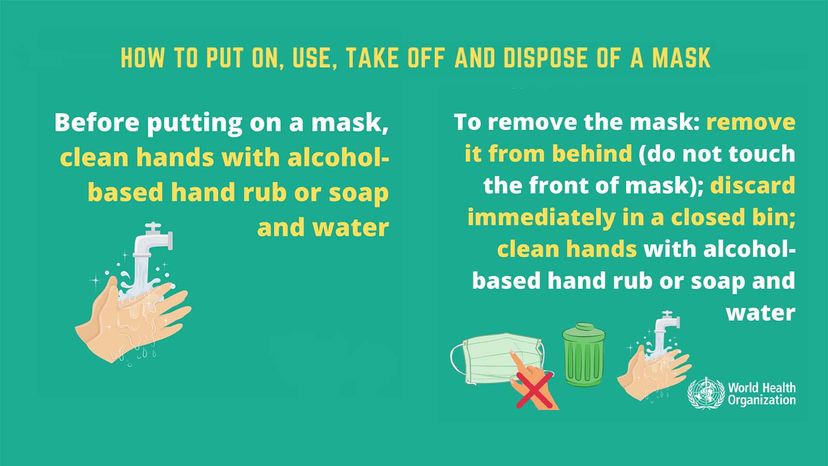 “Wearing a face mask now is more important than ever. But how do you wash and store it safely? yuoak/Getty Images
“Wearing a face mask now is more important than ever. But how do you wash and store it safely? yuoak/Getty Images
Early in the COVID-19 pandemic, recommendations from experts focused on handwashing and social distancing. But as we learned more about coronavirus transmission, the Centers for Disease Control and Prevention (CDC) and the World Health Organization began urging people to wear masks in public. Not a replacement for social distancing, face masks are intended to help slow the spread of coronavirus.
So far, the practice of wearing a mask in public is not being adopted by everyone, even though studies have supported the idea that face coverings can trap exhaled particles from the wearer to keep them from entering the air. That’s an important step, especially because many people who have COVID-19 may be asymptomatic. Wearing a face mask is an "altruistic act," meaning it’s for the welfare of others, according to an editorial published in late April 2020, in the Journal of Breath Research.
Wearing a mask might be uncomfortable or even cause breakouts (aka maskne), but finding the right one could help make it more bearable. N95 masks are currently relegated to health care providers, so for most people, a face mask means either a handmade cloth covering or one ordered online. The CDC also has simple instructions on how to make a mask from U.S. Surgeon General Dr. Jerome Adams.
If you have disposable masks — the kind you often see doctors wearing — you can simply throw them away after each use. But what if you have a few cloth masks? How do you safely wash and store them?
 “The World Health Organization provides very specific instructions on how to safely put on and take off a mask.WHO
“The World Health Organization provides very specific instructions on how to safely put on and take off a mask.WHO
Whichever type of mask you have, when you remove it, be sure not to touch your face. The CDC says to remove the mask by its strings or ear loops, touching only those parts; never touch the mask material itself. Remove and throw away the filter if your mask has one. Fold the mask so that the front comes together, then wash your hands immediately after.
If you’re using a cloth face covering, you should wash it after each use. Toss it in with your regular laundry and detergent using the warmest appropriate water setting for the type of cloth your mask is made from.
You can also wash it by hand. The CDC recommends a solution of household bleach and water, as long as your bleach is the disinfecting kind and not the color-safe kind. Soak your mask in the solution for five minutes and rinse thoroughly.
After washing, you can dry your mask in the dryer on high heat or in direct sunlight.
When it comes to storing masks, Lisa Maragakis, senior director of infection prevention at The Johns Hopkins Health System, wrote that you should keep them in a clean place when you’re not wearing them. A zip-close bag is perfect.
Considering you may need to clean and dry your mask after each outing, you probably want to have more than one.
Now That’s Important
One key thing to remember is wearing a mask works in both directions. If everybody wears a mask that protection doubles. Even if the masks don’t protect us 100 percent from coronavirus, wearing them can significantly reduce the risk of transmission.



























